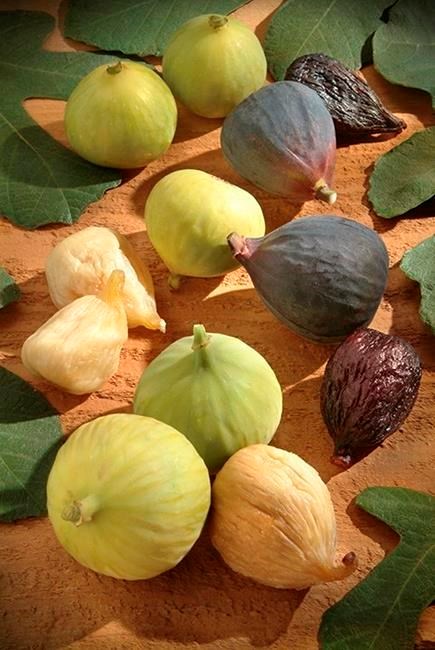TORONTO — Figs, the sexy sister to prunes, seem to be popping up in dozens of new products, including jams, chutneys, chocolates, cereal bars, balsamic vinegars and packaged goat cheese.
Like prunes, figs are high in fibre, calcium and potassium and aid in digestion. They're low in cholesterol and fat-free.
"They're fantastic in terms of fibre. Depending on the size, having between three and five either dried or fresh figs gives you five grams of fibre. What's unique about the fibre is the mix of insoluble fibre and soluble fibre," says Christy Brissette, a registered dietitian in Toronto and president of 80 Twenty Nutrition.
Fibre includes the parts of plant foods that your body can't digest or absorb. Insoluble fibre, found in wheat bran, whole grains and some vegetables, helps promote regularity and a healthy digestive system, Dietitians of Canada says. Soluble fibre helps lower blood cholesterol levels and control blood sugar levels. This type of fibre is found in oats, barley, psyllium, oranges, dried beans and lentils.
In a fibre faceoff, figs would edge out prunes, or dried plums.
"(Figs) have natural sugar, but it's packaged together with fibre and other nutrients so you're not getting those empty calories," Brissette said. "You're getting fibre that's going to slow down the release of that natural fruit sugar."
Eating 125 ml (1/2 cup) of dried figs provides 120 milligrams of calcium. A serving of three large figs will yield slightly more potassium than a banana. Increasing the amount of potassium in the diet counteracts the effects of sodium, helping reduce blood pressure, says Brissette.
Home cooks are fashioning easy appetizers out of dried figs by stuffing them — with gorgonzola or soft goat cheese and a walnut or almond — to elevate a charcuterie platter.
The sweet-tasting fruit with its unique texture can also be used in stuffing for roast pork loin, sauce for chicken or pasta, sliced into quinoa salad, or served on overnight oats and in yogurt bowls.
Turkey is the No. 1 fig grower while California is the third largest producer of fresh and dry figs, says Karla Stockli of the California Fig Advisory Board.
Nearly 50 per cent of the fresh California crop is exported to Canada. Fresh are available from May to December while dried figs are in stores year-round.
Some of the more common types shipped to Canada include Black Mission — the oldest variety planted in California by missionaries in the 1600s — and Golden varieties, which can be a mix of Calimyrna, Kadota and Sierra.
Small quantities of a new fresh variety called Tiger were exported to Canada last year. The pretty fig has yellow and green stripes with a vibrant raspberry-red interior.
Fresh figs are picked ready to eat, so when buying be sure they have a little give. Refrigerate immediately and they should keep for 10 to 14 days. For storage up to six months, wash them, slice off the stems, place them on parchment paper and set them in the freezer. Once frozen, wrap well.
Dried figs that are well sealed will keep up to a year.
Follow @lois_abraham on Twitter.
Lois Abraham, The Canadian Press

